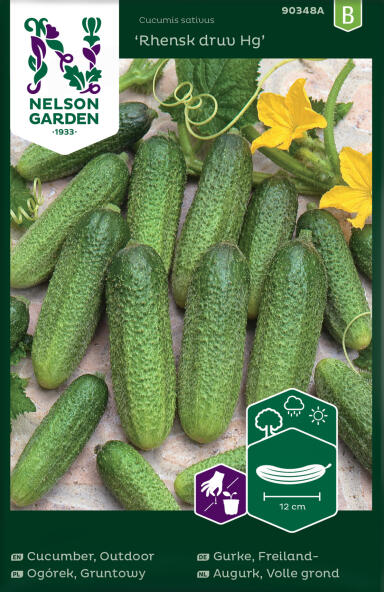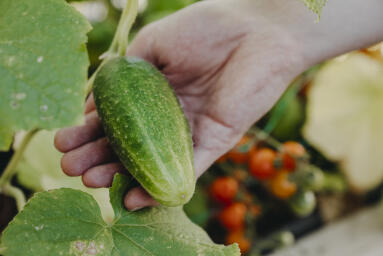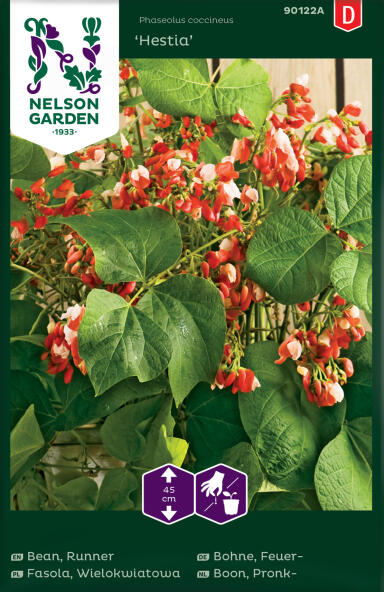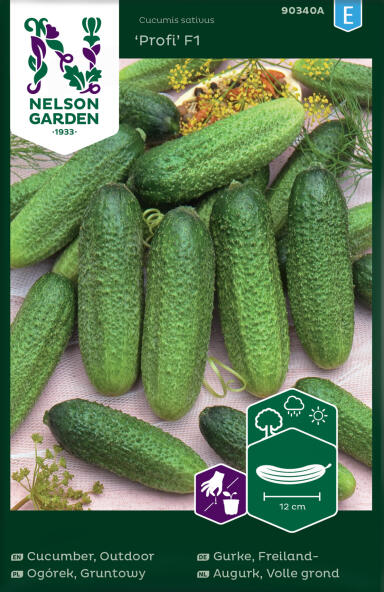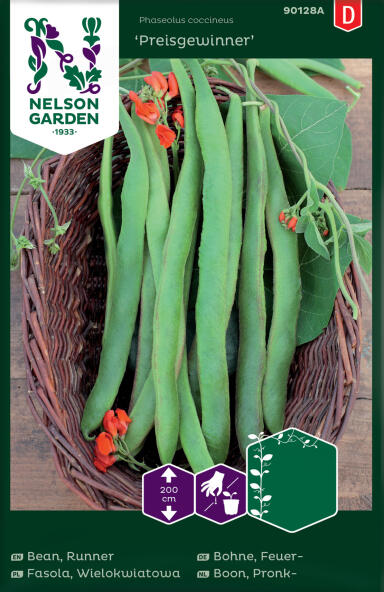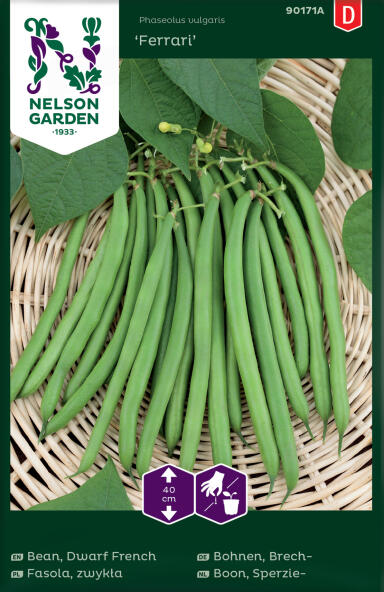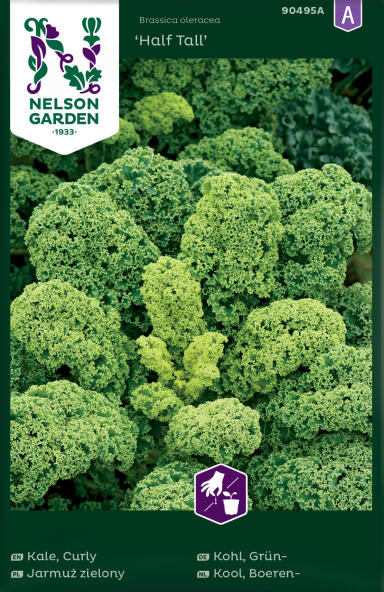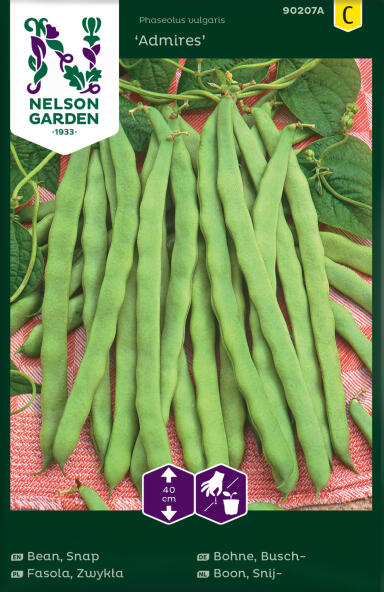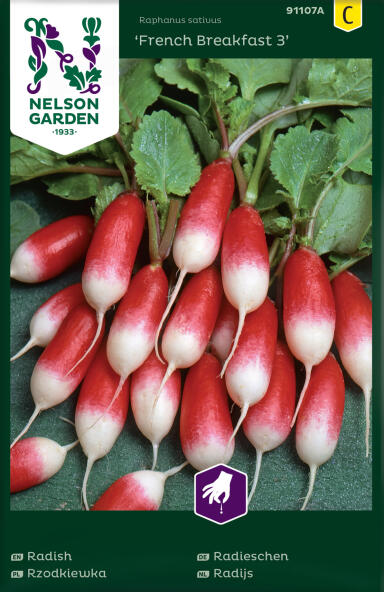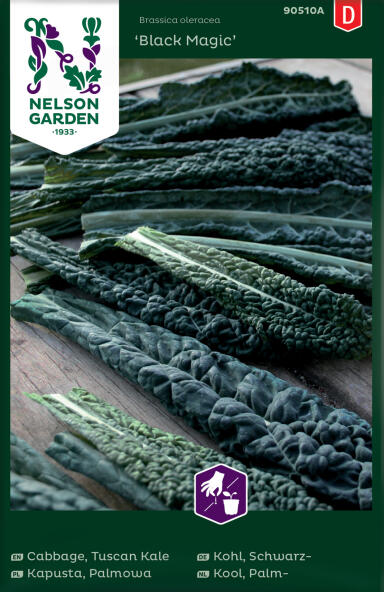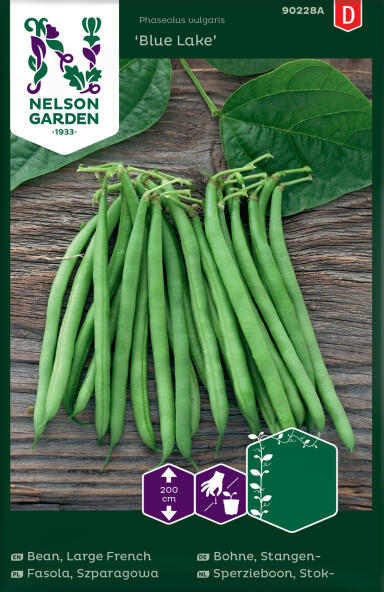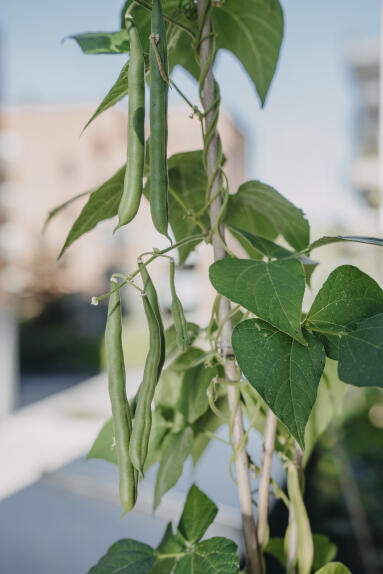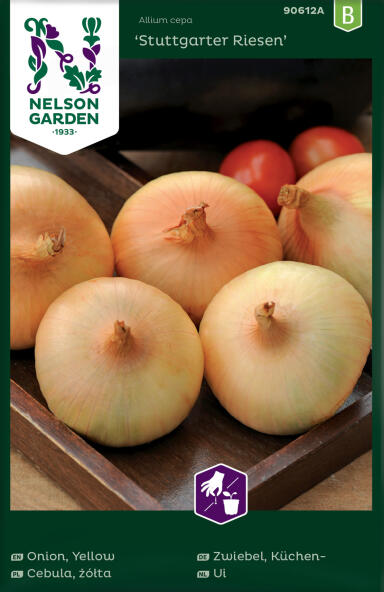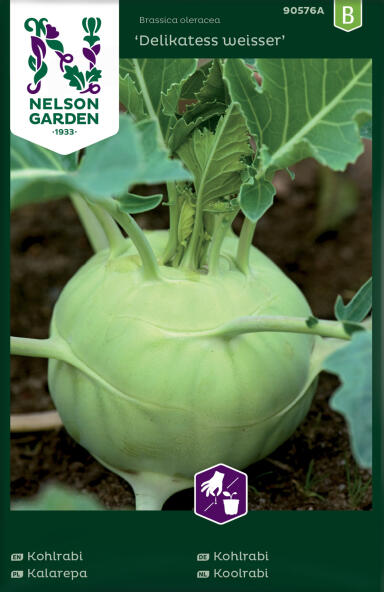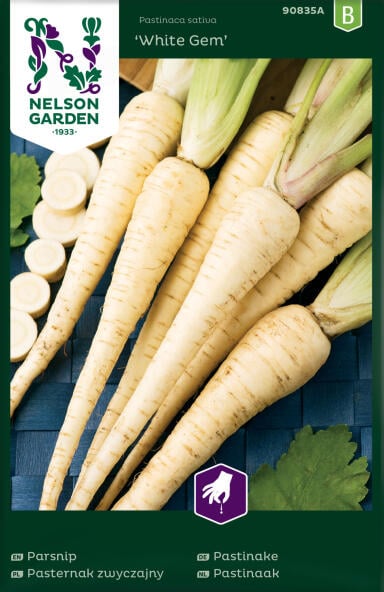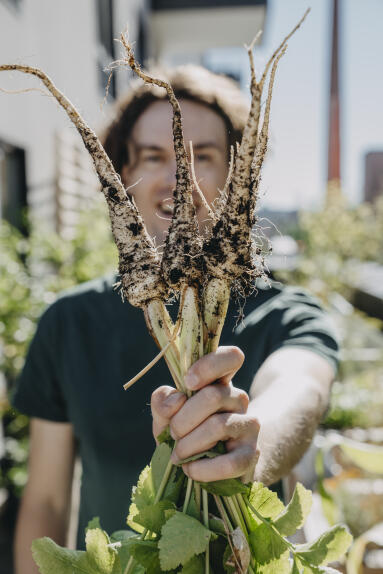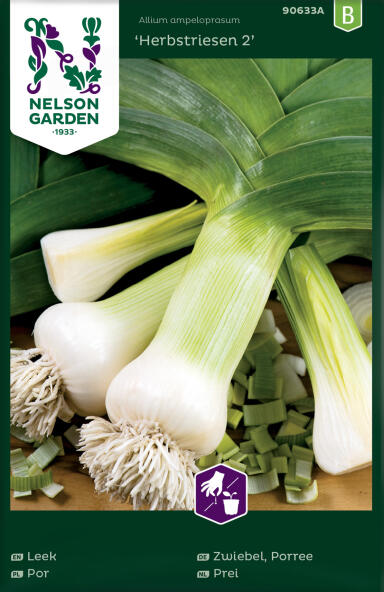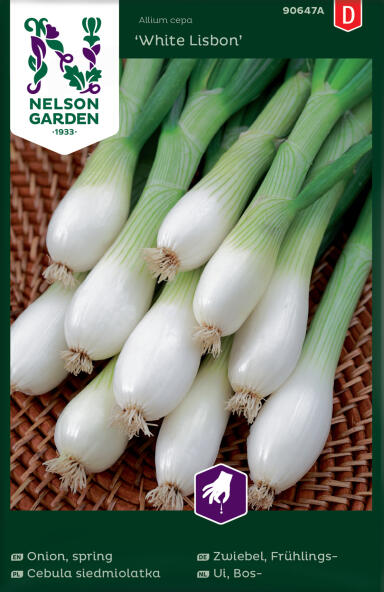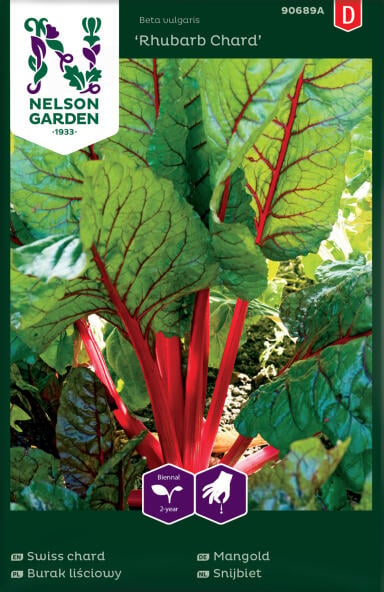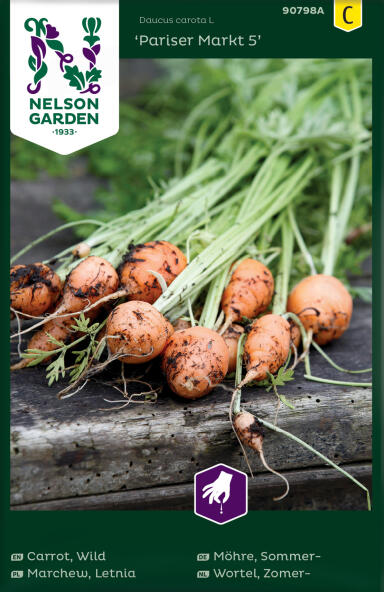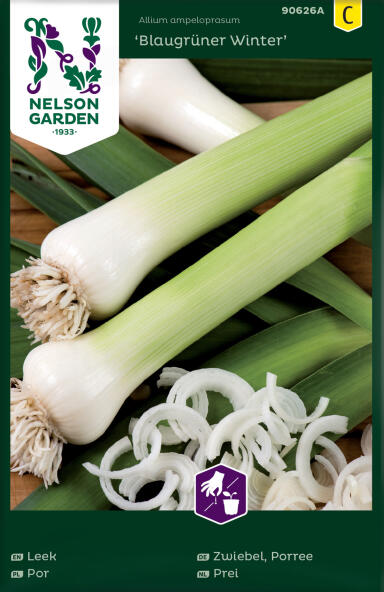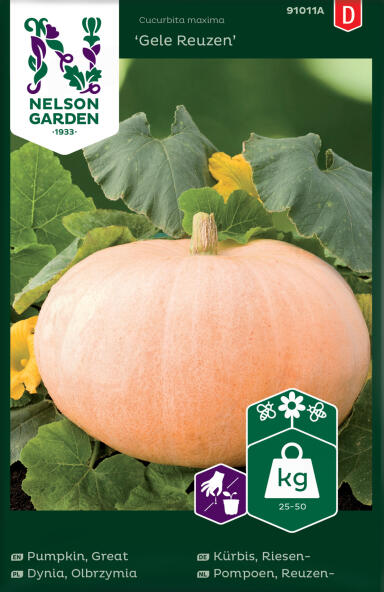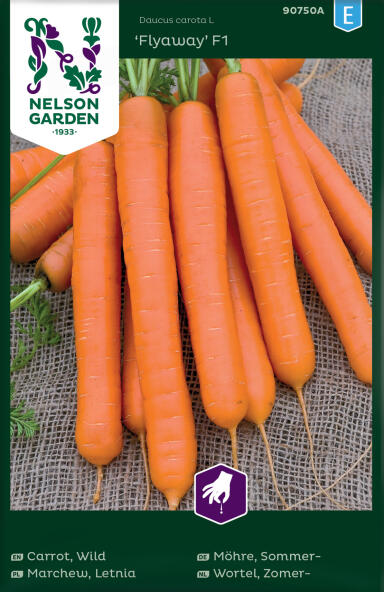Free returns
Quick delivery
Established 1933
What does the seed bag tell me?
01 June 2021When you are ready to put your seeds in the soil, the seed bag is your best friend that will guide you on how to handle the seeds, how to grow them, and what to expect. Depending on which company you buy your seeds from, the seed bags may look a bit different. However, most bags have similar information. In this blog post, we walk you through all the information to be found on seed bags from Nelson Garden. Let’s go!
On the seed bags from Nelson Garden, you will easily find the most important information directly on the front!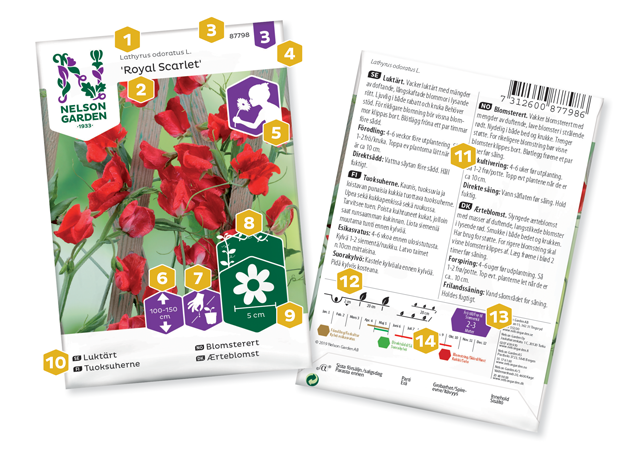
- Latin name
- Variety name
- Article number
- Price group with number
- Additional mark showing that the flower is fragrant
- Supplement label for height in centimeters
- Supplement label for pre-grown and/or direct sowing
- Additional guide label that tell if the variety is suitable for outdoor cultivation or that it is a climbing plant
- Guide label that, for example, tell its size, strength and sweetness
- Name
- Detailed information
- Planting and row spacing, as well as sowing depth
- How many seeds that is needed for a certain number of plants or meters
- Calendar showing times for pre-cultivation and direct sowing as well as flowering or harvest
The guide labels tell the size of the flowers and vegetables. It also tells you how hot chili fruits will get as well as the sweetness of carrots. This label is red for flowers, green for vegetables and orange for spices.
The additional guide labels tell you the more specific features for the plant. Maybe the tomato is especially suitable for outdoor cultivation, or maybe the plant is a climbing plant.
The supplement labels show, for example, whether the seeds should be pre-cultivated or directly sown and whether they are fragrant or perhaps organic.
The most important information on the front
You will find the most important information on the front of the seed bag. This way, you can quickly scan whether the seeds are what you are looking for. The information will let you know the following:
- The name of the plant
- The variety name of which the seeds belong to
- If the seeds need to be pre-cultivated or if they can be directly sown in the soil
- How tall the plant will be
- If it is a climbing plant
- How big any flowers will be
- How big or heavy any fruit will be
- If the plant is preferred by pollinators
Moreover, for carrots and chili you can also find a symbol that indicates the taste of the crop in question, so you know what to expect.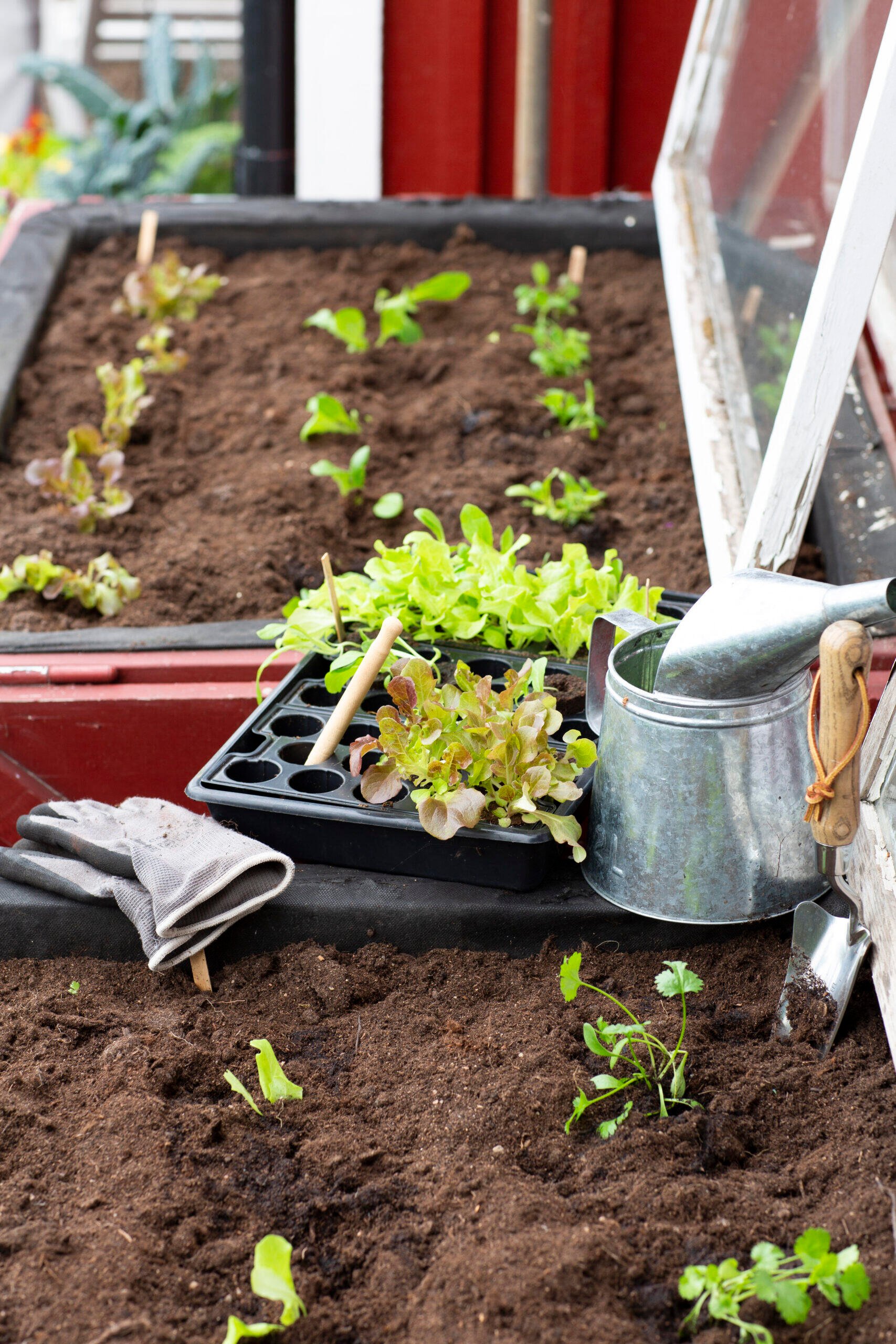
In-depth info on the back of the seed bag
On the back, on the other hand, you will find more detailed and in-depth information. Here you will find:
- A brief description of the variety
- Its character
- Areas of use
- Brief tips on sowing and how to succeed with the particular plant in question
If you are new to cultivating, there might also be some expressions that are new to you. But don’t worry, we will help you sort them out!
Protected location – the plant is a bit sensitive and if it is to grow outdoors it needs to be placed in a windless and sunny place.
Cover the plant for wintering – the plant can survive outdoors in a flower bed as long as it is protected from ground frost. Leaves and other garden waste suits well as protection, but combine it with stronger branches or a basket to keep it in place throughout the winter.
Winter storage – this is a matter for carrots and root vegetables, as well as for some cabbage plants. This information lets you know whether the vegetables can be stored for a longer period of time after harvest, for example in a cellar or other cool spaces, to be eaten throughout the winter.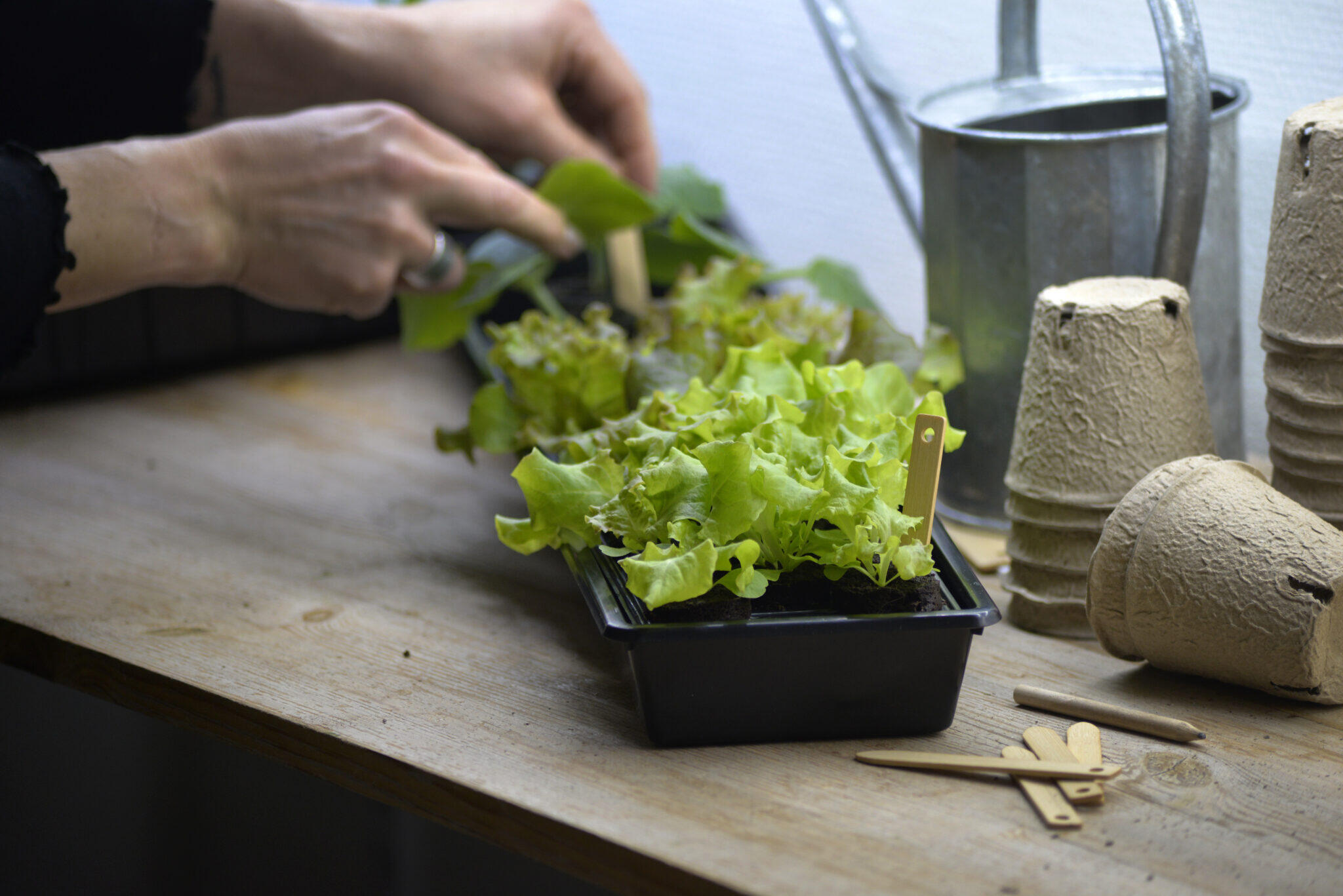
The advantage of sowing in plugs is that you can easily replant plug by plug when they need to be replanted. Photo: Markus Danielsson
Remember to check the bottom of the seed bag
At the bottom of the bag you will find a date stamp with the last day of sale. If you have seed bags where the date has passed, it does not mean that your seeds have become old and unusable. If you have stored them properly there is a good chance that you can still use them. Here you can read more about what governs the durability of your seeds and take part in Gunilla's seed saver tips.
Also, at the bottom of the seed bag you will find a unique number telling which batch the seeds originate from. It is a good idea to save this number in case there is something wrong with your seeds, as the supplier can track down which batch the seeds belong to with the help from this number.
You will also find information about the germination rate of the seeds. This indicates to what proportion the seeds are expected to germinate. Hopefully all the seeds you sow will grow, but the manufacturer can never give any guarantee. If the germination rate, for example, says 75 %, then you can expect that about three out of four seeds will germinate.
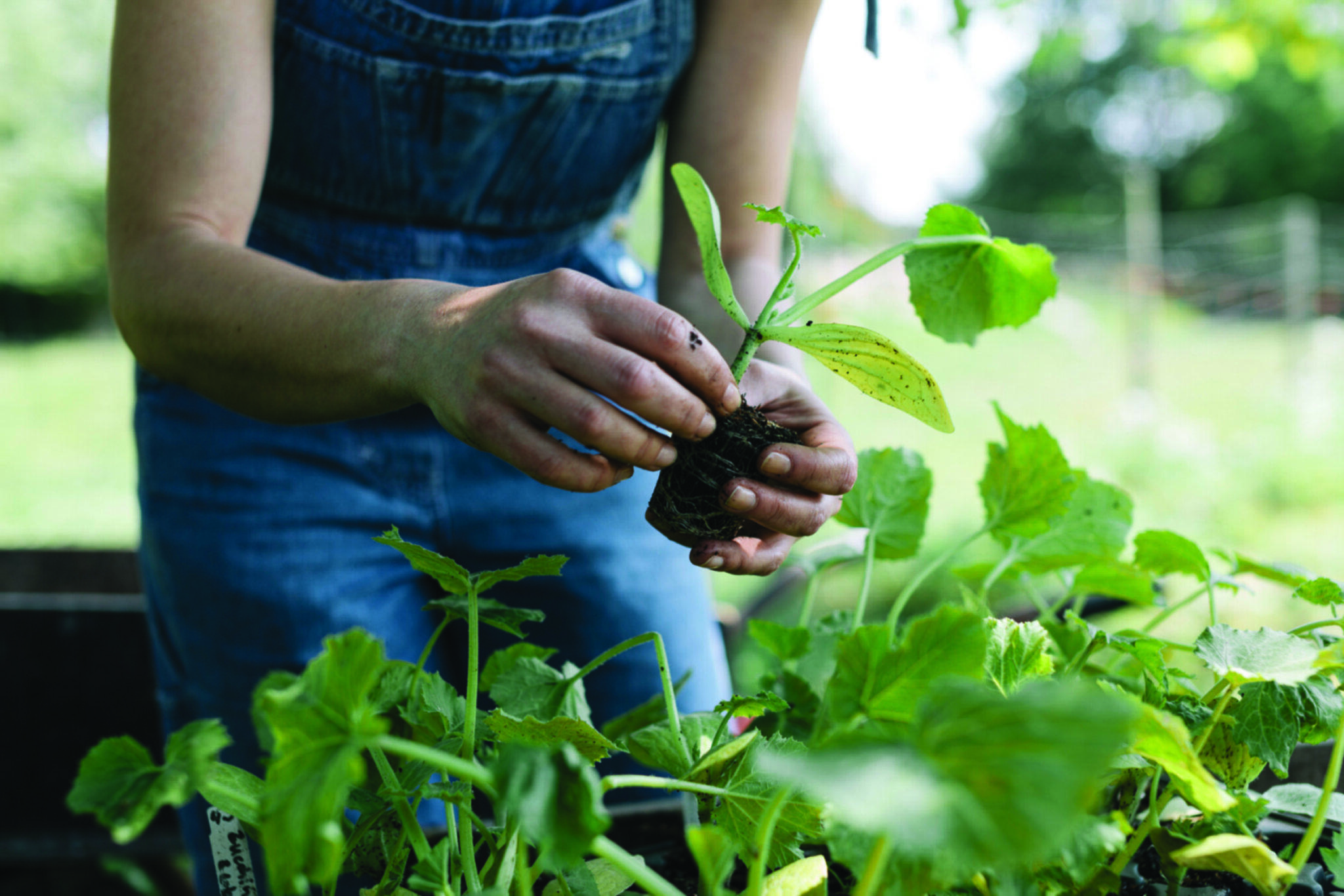
Outdoor cucumbers are cucumbers that do not require a greenhouse, but can settle for a warm and wind-protected place in the garden.
The Latin name provides valuable information
On the back of the seed bag you will also find the Latin name of the variety in question. The Latin name can be of interest if you use crop rotation in your garden. By alternating the type of crops that are grown in a certain area of your garden from year to year, you can optimize your cultivation and prevent the soil from becoming sick or too depleted. With the help of its Latin name, you can determine which genus the crop in question belongs to and better plan the crop rotation. For example, cabbage is of the genus that begins with the Latin name Brassica, and you can with the help of its Latin name Brassica identify any seeds that are a cabbage variety.
